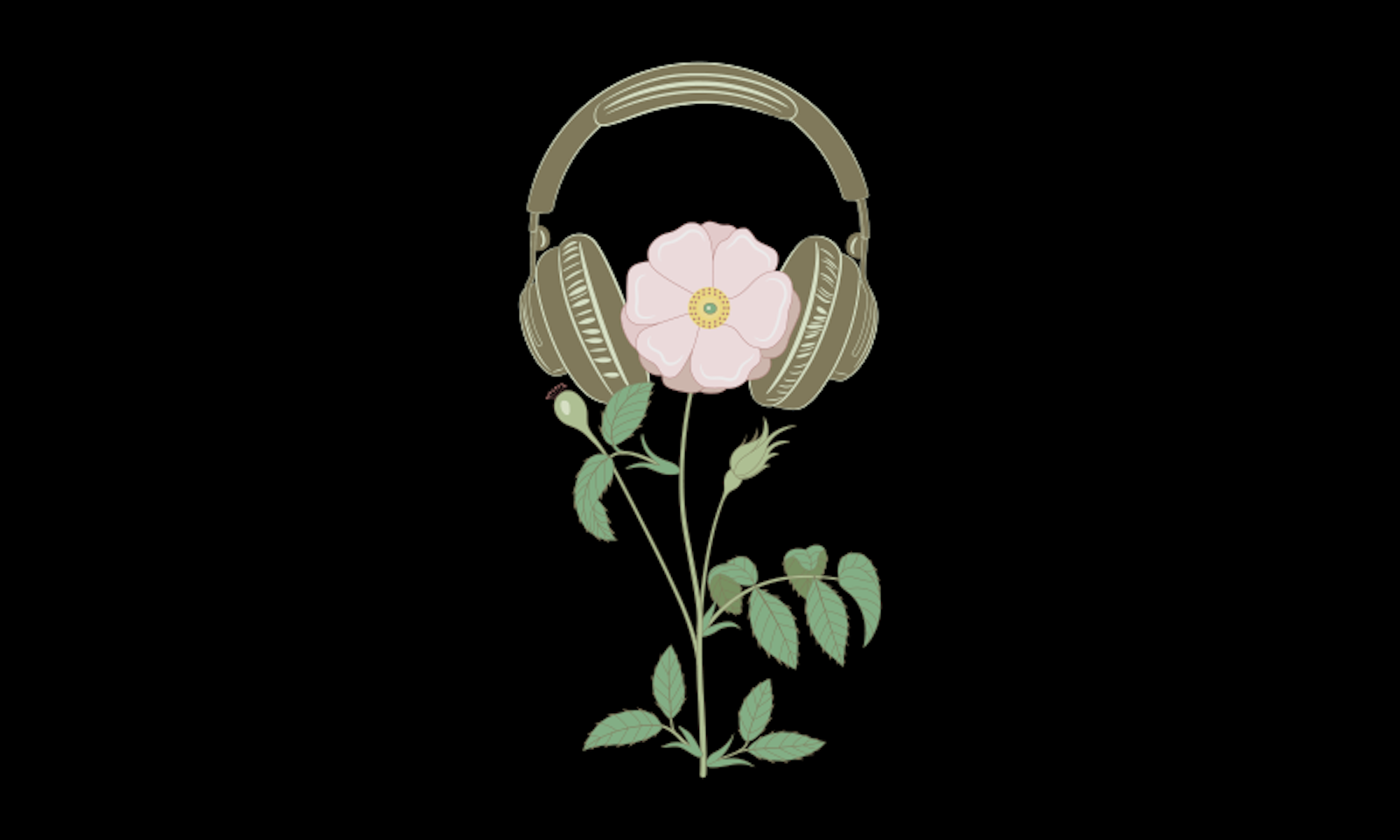It is not the trees … that make a wood,” the author J.A. Baker once suggested, “but the shape and disposition of the remaining light, of the sky that descends between the trees.” Something similar may be true in relation to sound, because the forest also becomes apparent to many sentient creatures through the resonances in the spaces between the trees. The tap of raindrops on leaves, the clack of branches, and the rustle of vegetation shape our sense of what surrounds us. According to the botanist Diana Beresford-Kroeger, the xylem and phloem that transport vital fluids inside trees may be especially long in old-growth forests, and resonate in ways that birds find attractive, encouraging them to nest.
Plants reverberate both literally and figuratively. Literally, there is a vine in the Cuban rainforest that has evolved bowl-shaped leaves that act as sound reflectors. The leaves help echolocating bats home in on the vine’s flowers twice as fast as they do those of other plants, and in return for a drink of nectar the bats pollinate the vine. Figuratively, the Japanese poet Matsuo Bashō imagines that he hears the sound of temple bells continuing in the flowers after the bells themselves have stopped.
The root tips of plants act like the brains of simple animals.
In the poem “A Tree Telling of Orpheus,” Denise Levertov imagines a tree that is moved to dance by the musician’s song.
But can plants actually hear? Charles Darwin tried to find out by playing a bassoon to a mimosa. He wondered if it might respond by closing its leaves, just as it does when gently touched. The mimosa did not move, however, and Darwin concluded that he had been engaged in a “fool’s experiment.” His lack of success did not deter a mezzo-soprano named Dorothy Retallack, who in the 1960s showed—to her own satisfaction at least—that plants grow better when exposed to Bach but shrivel under the influence of Jimi Hendrix and Led Zeppelin.
Retallack’s method was deeply flawed, but more refined tests in the 1970s did at first seem to suggest that corn germinates more rapidly when exposed to music of any kind, whether Mozart or Meatloaf, than to silence. But this finding turned out to be wrong, too. It was actually warmth from the loudspeakers that was making the difference.
By the early 21st century, some researchers were arguing with confidence that members of the plant kingdom are insensitive to sound. Yes, many trees and other plants are exquisitely sensitive to signals passed by others through mycelial networks in the soil, and in other ways. But what advantage could there be for plants in detecting sounds, and how could they possibly do so without brains, or even nervous systems? It seemed like the case was closed.
Except it wasn’t. It turns out that plants such as the beach suncup, or beach evening primrose, do hear the sounds of animal pollinators. Using its flowers to magnify and concentrate the sound like an old-fashioned ear trumpet, the suncup reacts to a bee’s buzzing wings by increasing the concentration of sugar in its nectar. It does this in less than three minutes—fast enough to make a difference to a bee that has been exploring nearby before it decides to touch down. Even if the bee flies away too quickly, the plant is ready to better entice the next one.
Researchers have also increasingly realized that some plants are remarkably sensitive to vibrations and can discern what is causing them. Thale cress can detect vibrations of less than one ten-thousandth of an inch, or 0.00254 millimeters, in their leaves caused by insects chewing on them, and release a repellent chemical in response. The same plants, exposed to other vibrations caused by the wind or different insects, do not produce more of the chemical. Roots of the common pea plant, meanwhile, can locate water by the vibrations that the water makes when moving inside a pipe even though the soil immediately around the pipe is no wetter than the surrounding soil. The roots then start to grow toward the pipe.
Darwin’s original experiment may have failed but, as was so often the case with him, his first intuition was not far off track. When he suggested in his penultimate book, The Power of Movement in Plants, that root tips act like the brains of simple animals, he was right. We still understand little as to how some plants process sound and organize their reactions to it, but we can add to Shakespeare’s figurative “tongues in trees and books in the running brooks” a real world in which some flowers actually hear.
It is also becoming increasingly easy for us humans to listen to the sounds that plants make as they grow and respond to their environment. Microphones placed on the trunk of a tree can capture the sound of water and nutrients channeling through cells: a kind of delicious woody drinking noise. “The sounds of plants are much more fascinating, and challenging to our perception of them, than we have yet to realize,” says musician and field recordist Jez riley French. As technologies for listening to them become more accessible, he suggests, there is an opportunity to learn to respect and represent the ecologies of which they are a part with more equity; we can learn that ecosystems that thrive depend on roots and soil, not just on eye-catching leaves and flowers. ![]()
This excerpt is the third in a four-part series adapted from excerpts of Caspar Henderson’s Book of Noises: Notes on the Auraculous. You can find the first here and the second here. Look for the final excerpt next week.
Reprinted with permission from A Book of Noises: Notes on the Auraculous by Caspar Henderson, published by the University of Chicago Press. © 2023 by Caspar Henderson. All rights reserved.
Lead image: Eroshka / Shutterstock




























